SZ charts a new path for green cities as forum highlights AI power
Writer: Windy Shao | Editor: Lin Qiuying | From: Original | Updated: 2025-10-22
Under the grand vision of China’s “dual carbon” goals, Shenzhen — the pilot demonstration zone for socialism with Chinese characteristics — is charting a bold path toward sustainable urban development. As both a staunch advocate of green concepts and an active practitioner of low-carbon transformation, the Shenzhen National Low Carbon City Forum has grown into a key barometer for green and low-carbon development in China and around the world.
A national platform gathering wisdom
As a national-level international platform, the Shenzhen National Low Carbon City Forum has not only gathered global expertise but also driven the creation of a series of replicable, scalable green practices.
Since 2022, the forum has selected 26 urban green and low-carbon demonstration bases, spanning fields such as energy, construction, industry, transportation, finance, and education. Together, they represent a practical and visionary “Shenzhen Solution” for global sustainable development.
Smart buildings that 'breathe'
The Antuoshan Headquarters Tower stands as a model of green architecture, integrating 80% of the world’s leading carbon-reduction technologies and featuring the world’s largest BIPV photovoltaic curtain wall — a dazzling emblem of Shenzhen’s green skyline. The Future Tower in the core area of the Low Carbon City is half as energy-intensive as conventional buildings, its façade cleverly wrapped in photovoltaic panels and vertical greenery. Hailed as a “living textbook of near-zero carbon architecture,” it serves as a benchmark for sustainable building worldwide.
Meanwhile, the Dashi Smart Building has achieved three consecutive years of carbon neutrality through digital technologies that make low-carbon operations visible and experiential — a first for Shenzhen. The Tianjian Yuntu Innovation Center employs an “energy cockpit” to enable intelligent energy regulation across its campus, setting a new model for green management in industrial parks nationwide.
Industrial upgrades and transport innovation
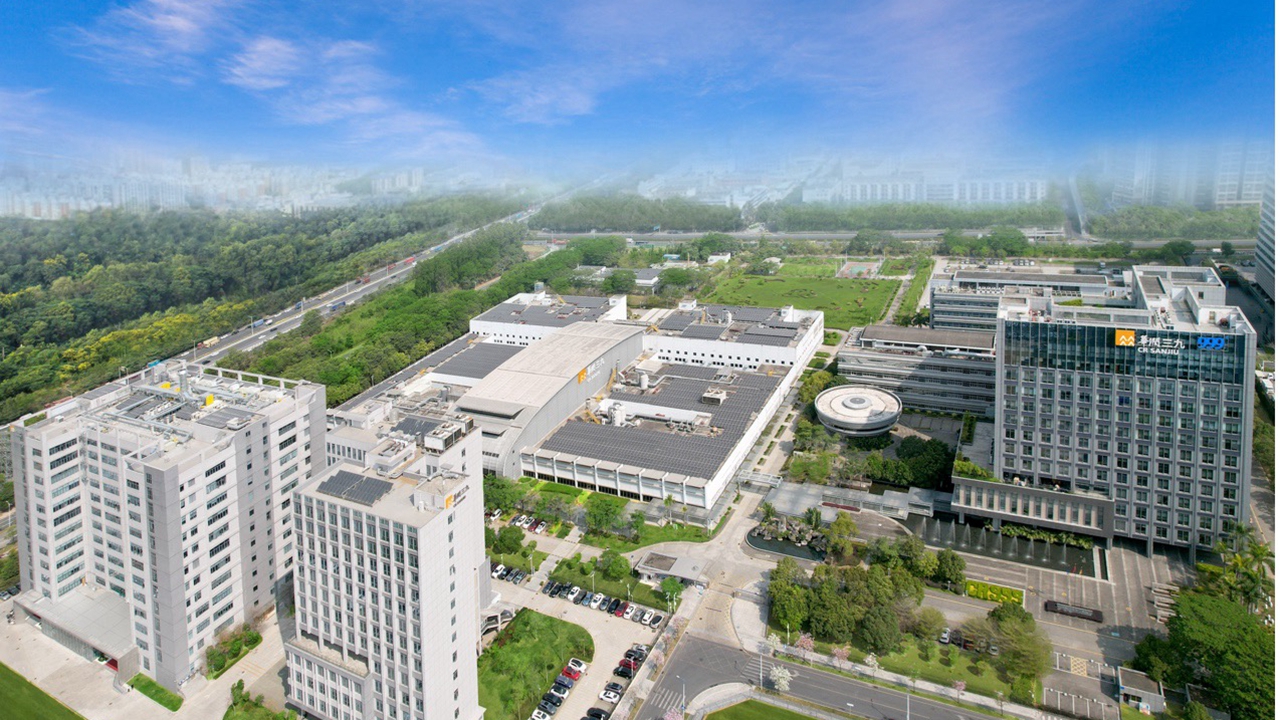
CR Sanjiu Guanlan Base. File photos
In the industrial sector, the Baiwangxin Intelligent Computing Center reduces carbon emissions by 30,000 tons annually through advanced liquid-cooling technology, showcasing the transformative power of technological innovation in energy efficiency. The CR Sanjiu Guanlan Base, a near-zero-carbon industrial park, boasts a 92.9% green power self-consumption rate and ranks among the world’s top 100 low-carbon cases — a role model for industrial decarbonization.
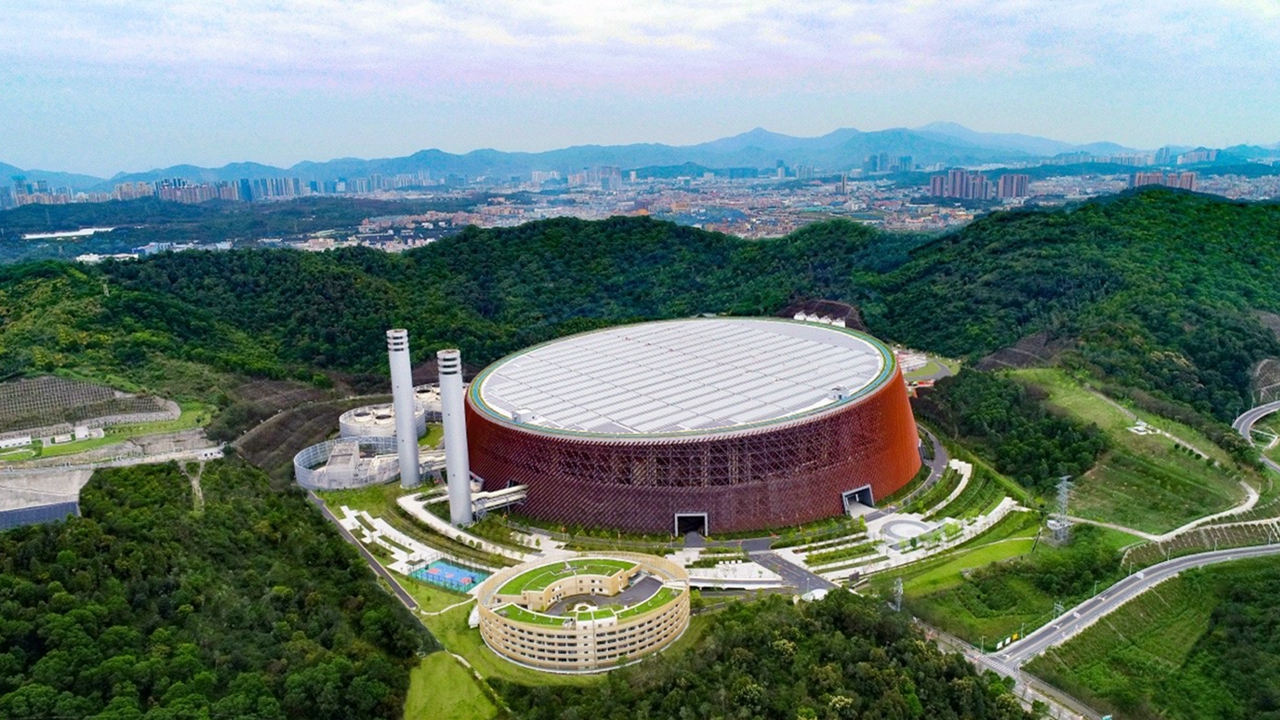
Longgang Energy Ecological Park.
The Longgang and Nanshan energy eco-parks have turned waste-to-energy plants into “urban attractions,” helping residents understand the magic of turning waste into power. In Futian, the Water Purification Plant has adopted an innovative “double-layer semi-underground” design — with a treatment facility below and a 76,000-square-meter football park above — creating China’s first “indoor water plant, rooftop playground.”
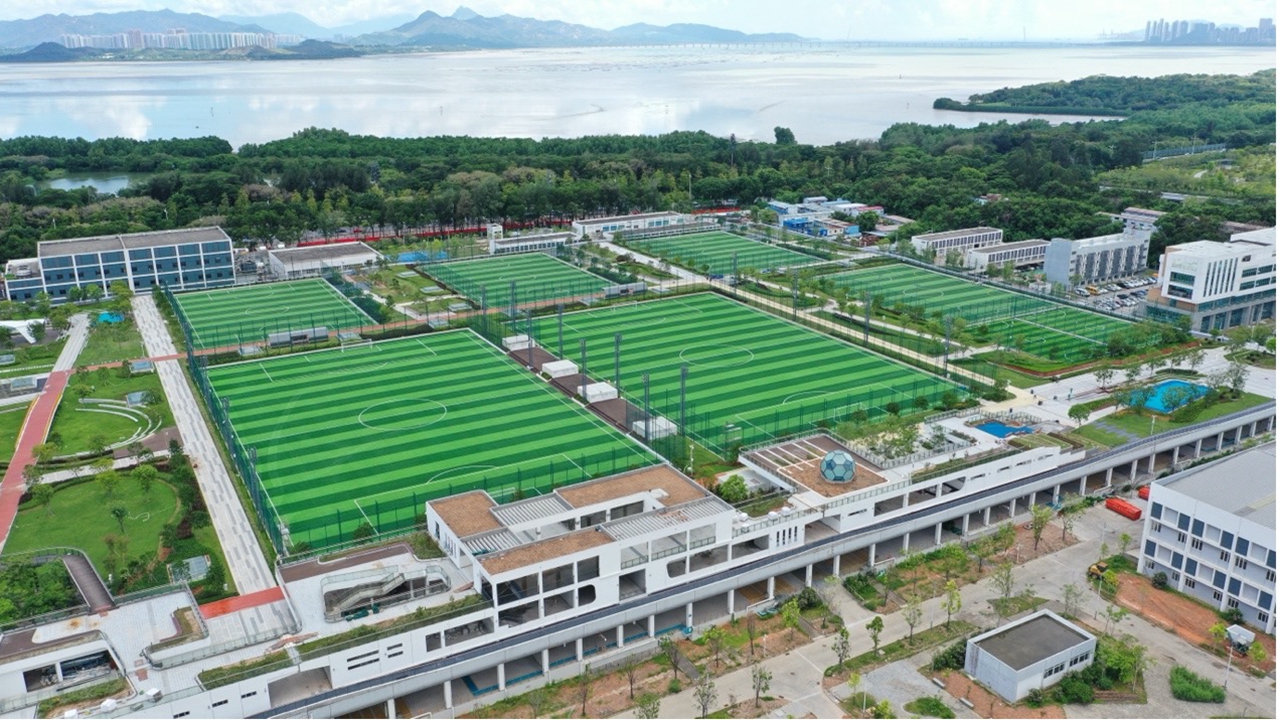
Futian Water Purification Plant.
In carbon capture, China Resources Power’s CCUS Demonstration Project in Shenshan captures 20,000 tons of CO₂ annually, converting it into dry ice and using microalgae for further carbon sequestration — literally turning carbon into gold.
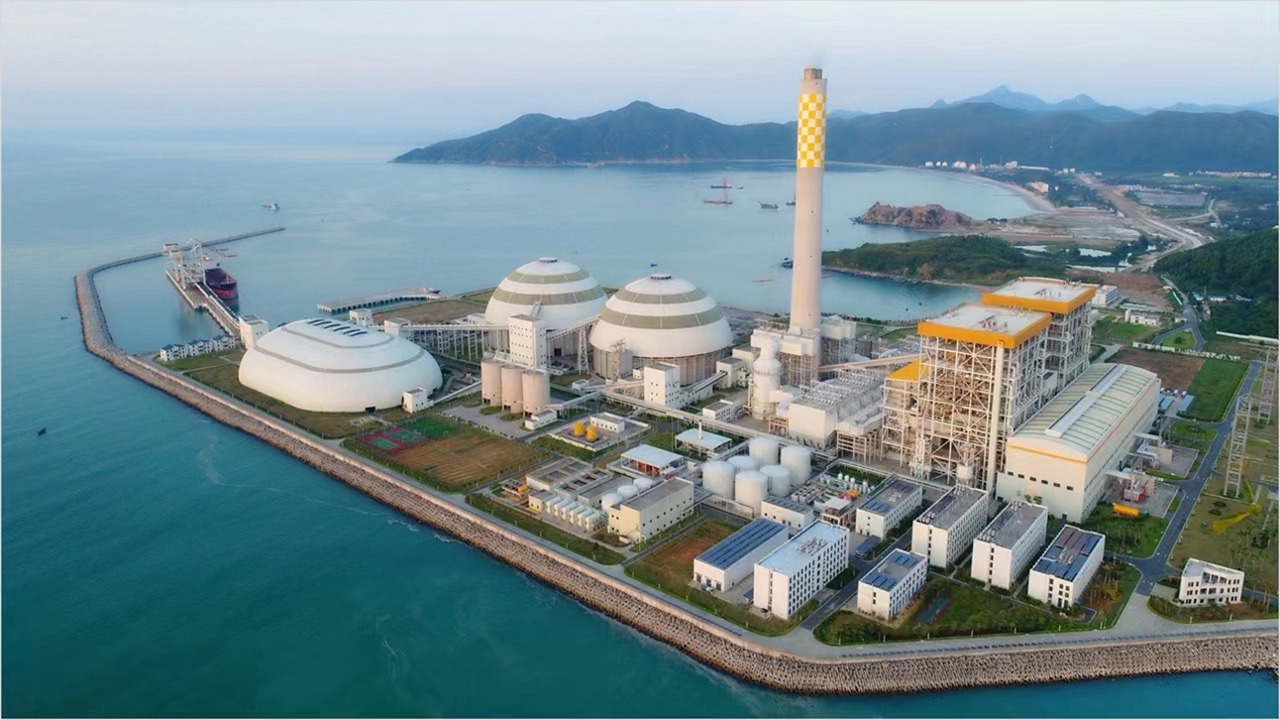
China Resources Power’s CCUS Demonstration Project.
Shenzhen’s transportation sector is also flourishing with green innovation. The Shenzhen North Railway Station rooftop PV system generates over 3 million kWh annually, while the HAYLION NEV Supercharging Center offers “200 km of range in just 5 minutes.” Meanwhile, the Deep Space City AAM Center is pioneering “zero-emission flight,” ushering in a new era for sustainable urban mobility.
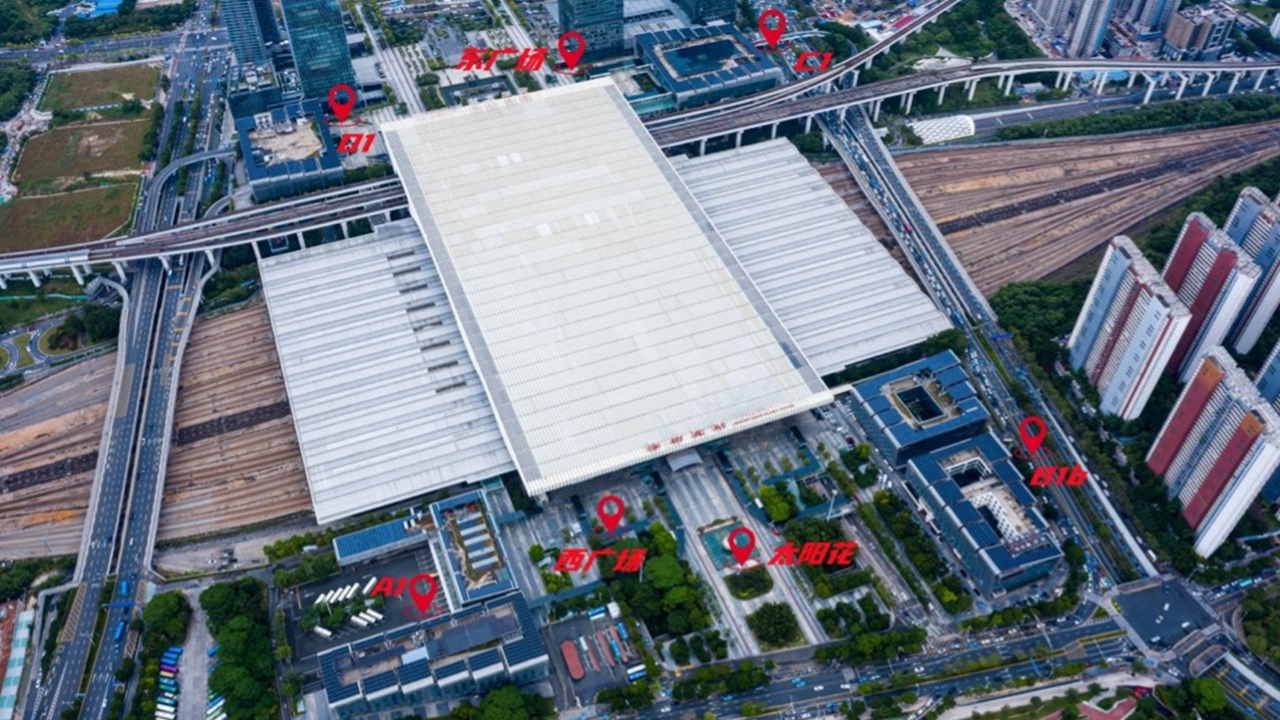
Shenzhen North Railway Station rooftop PV system.
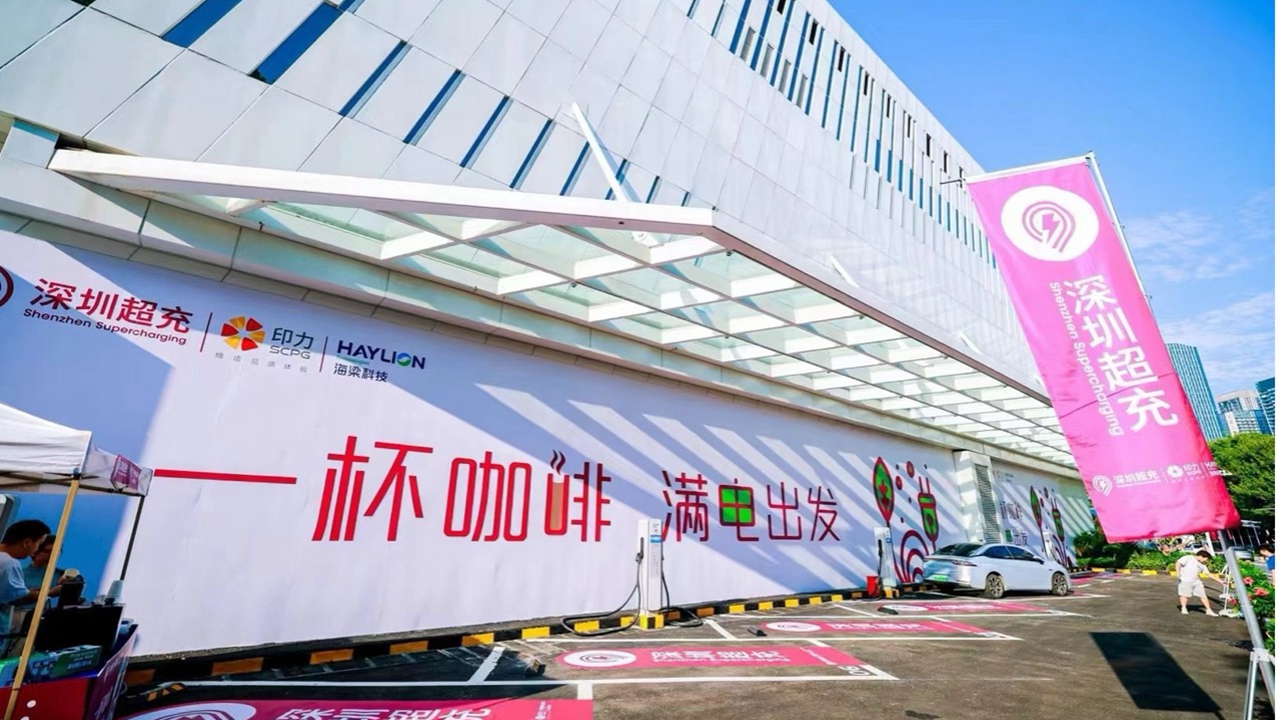
SCPG HAYLION NEV Supercharging Center.
Green finance and education
From establishing China’s first carbon market to expanding its green exchange, Shenzhen Emissions Exchange has maintained national leadership, achieving seven pioneering “firsts” in carbon finance and providing strong financial backing for green industries.
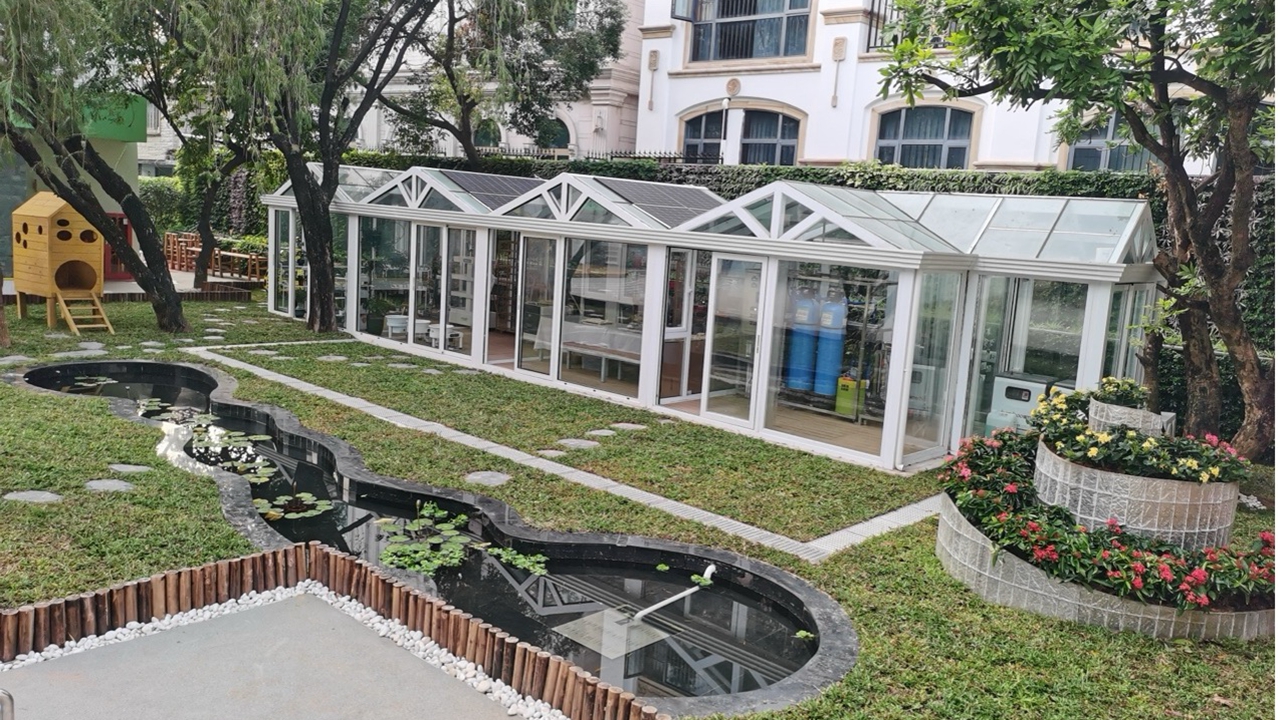
Luohu Yijing Kindergarten.
At the same time, Jintian Primary School and Luohu Yijing Kindergarten are nurturing “low-carbon classrooms” that let the dual-carbon concept take root in young minds. Through children’s influence on their families and communities, Shenzhen is fostering a powerful ripple effect of green awareness.
Low-carbon achievements
From buildings that “generate power” to transportation that can “fly,” and from green industrial parks to low-carbon campuses, the 26 demonstration bases together outline a vibrant low-carbon blueprint for Shenzhen. The National Low Carbon City Forum transforms isolated “showcases” into shared “landscapes,” turning green concepts into tangible action. Shenzhen’s achievements offer the world a shining example of determination and innovation in low-carbon development.
2025 forum highlight
As the city’s flagship green event, the 2025 Carbon Peak and Carbon Neutrality Forum & Shenzhen National Low Carbon City Forum will be held from October 28 to 29 at the Shenzhen International Low Carbon City in Longgang District.
Hosted by the Shenzhen Municipal People’s Government, this year’s forum adopts the theme “AI Empowering Green Urban Development” and follows a “1+6” format — one opening ceremony and six thematic sections across 14 events. Discussions will focus on frontier topics such as AI + New Energy, AI + Green Buildings, AI + Transport, and AI + Carbon Management, exploring how artificial intelligence can drive the next stage of urban green transformation.
The opening ceremony will center on the dual engines of “AI + Green Development,” featuring four major segments: Strategic Launch, Technology Breakthrough, Policy Dialogue, and Climate Collaboration. Highlights include the unveiling of the 2025 Urban Green and Low-Carbon Demonstration Bases and ESG Pioneer Enterprise Cases, showcasing outstanding AI-driven practices and innovations that offer new inspiration for global green development.
Since its inception in 2013, the forum has been held for 12 consecutive years, attracting guests from more than 60 countries and regions. It has become a vital international platform for showcasing China’s “dual carbon” progress and promoting global cooperation in sustainable growth. Continuing its tradition, this year’s forum will also host green technology roadshows and project matchmaking events, building a vibrant bridge connecting technology, projects, and capital in the green economy.
With AI and innovation as twin engines, the city is defining the future of low-carbon living and steering the world toward a greener, smarter, and more sustainable future.